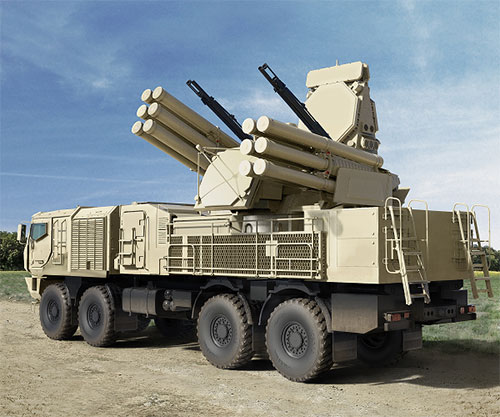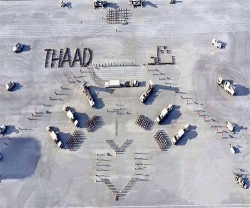On February 22, Rosoboronexport, Russia’s state mediator in arms trade, is holding a public presentation of the Integrated Counter UAV System. The presentation will be run within the frame work of the IDEX 2021 International Defense Exhibition in Abu Dhabi within the Russian national pavilion in Hall 12.
The counter UAV measures have become a hot subject after a number of drones’ attacks in Middle East and successful UAVs performance within Azerbaijani operation in Nagornyi Karabakh. The system is claimed being capable of effectively countering attacks by unmanned aerial vehicles, combining electronic warfare and air defense systems of various classes.
The system being proposed by Russia includes radars to track a various UAVs as well as jamming devices and SHORADs vehicles.
The anti-UAV jamming systems are claimed to be effective against light- and partly medium-class drones. These assets are capable of countering a massive air raid by unmanned aerial vehicles by suppressing their command/telemetry and navigation channels. According to Russian Ministry of Defense (MoD) the system has been effectively operated at the Russian military bases in Syria where all the terrorists’ attacks employing drones have been successfully repulsed.
Among the anti-UAV jamming equipment to be presented at IDEX is the Repellent-Patrol EW system is to provide areal coverage of the territories. The long-range system is capable of jamming drones at a range of up to 20 km, stated the Rosoboronexport press-service.
The Kupol and Rubezh-Avtomatika systems are to carry out continuous radio surveillance and create a protective dome over the installation. They are said to manage an impenetrable barrier to repel attacks not only by single drones, but also their massive use from different directions and altitudes within a radius of at least 3 km.
The Pishchal electromagnetic gun is one of the lightest handheld jammers on the market, weighing a mere about 3.5 kg. It can jam UAV control/navigation channels at a range of 2 km.
As a hard-kill component of its counter UAV system, Rosoboronexport offers short-range air defense systems, in particular, High-Precision Weapons (HPW) Tula-based Shipunov KBP Pantsir-S1M self-propelled anti-aircraft gun/missile (SPAAGM) system or Izhevsk-based KUPOL Tor-type SAM system. According to the KBP Head designer Valery Slugin, the company has been developing smaller missiles to be employed particularly against the drones. The new missile is to be approximately 4 times smaller of the existing one to increase the ammunition load of every Pantsir combat vehicle respectively.
These systems are capable of effectively engaging a variety of air attack weapons, including UAVs. The Pantsir-S1M has missile and gun armament and destroys air targets at up to 30 km in range and up to 18 km in altitude. The Tor-M2E’s engagement envelope against air targets is 15 km in range and 10 km in altitude.
The close-range air defense will be provided by the Verba or Igla-S MANPADS, both being designed and manufactured by the Kolomna-based KBM of HPW, as well as the Gibka-S MANPADS squad combat vehicles, capable of firing Verba or Igla-S. These weapons are to destroy targets at a maximum range of 6 km at altitudes from several meters up to 3.5 km.
The integrated use of the proposed electronic warfare and air defense assets will enable effective countermeasures against UAVs of any class provided air enemy reconnaissance and automated control systems are in place.
Rosoboronexport claims to offer a tailor-made solution for any customer to incorporate the above mentioned anti-UAV system within the frame work of national defense of each nation.




















